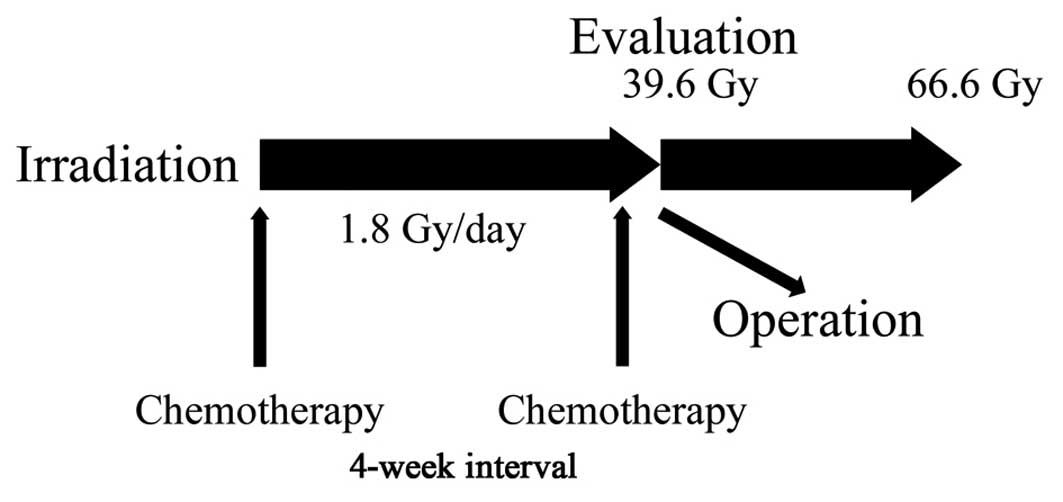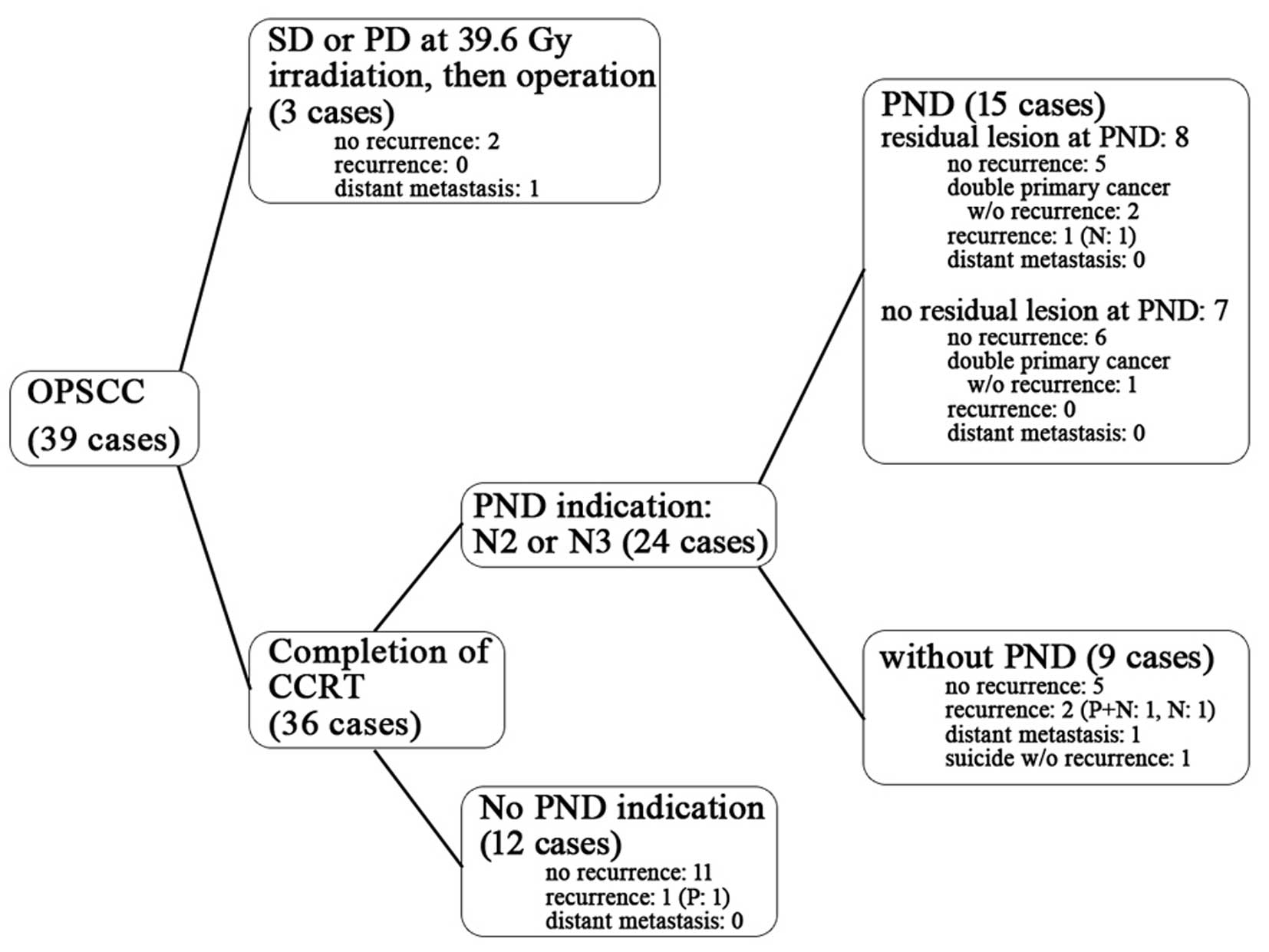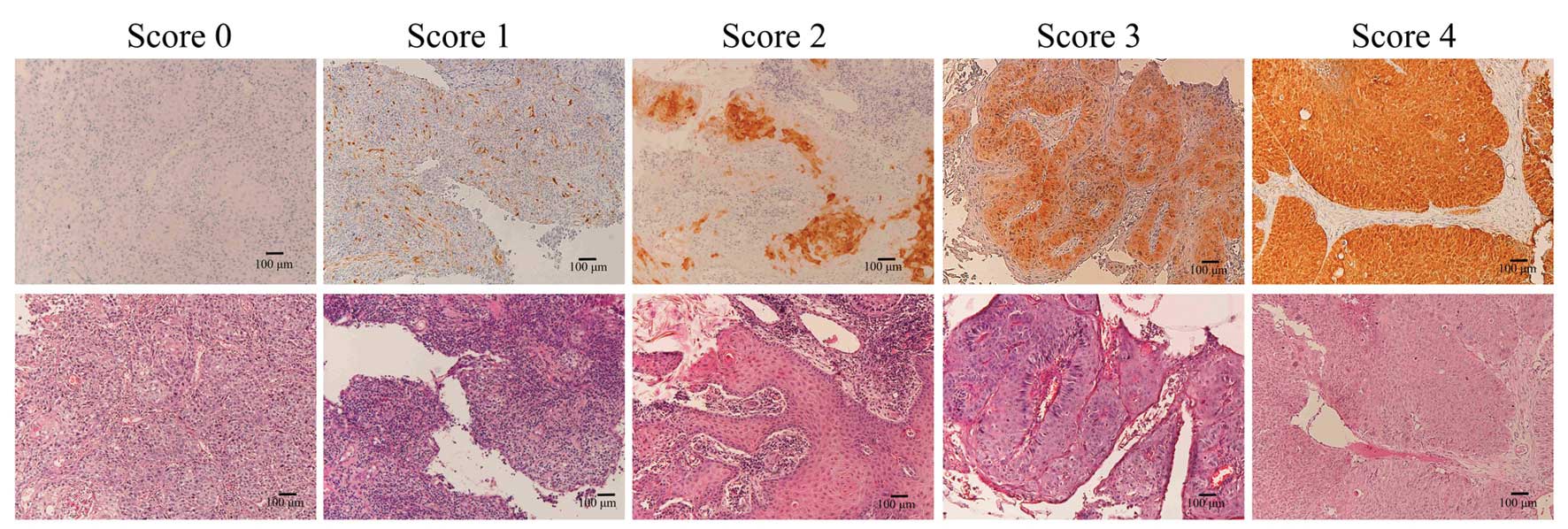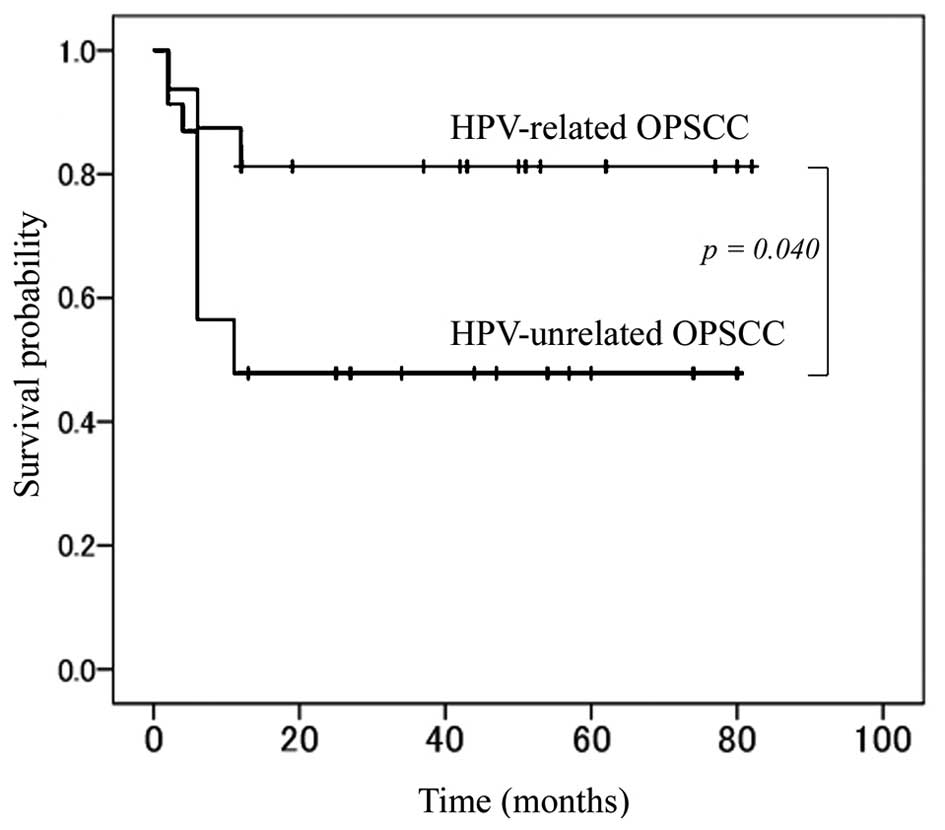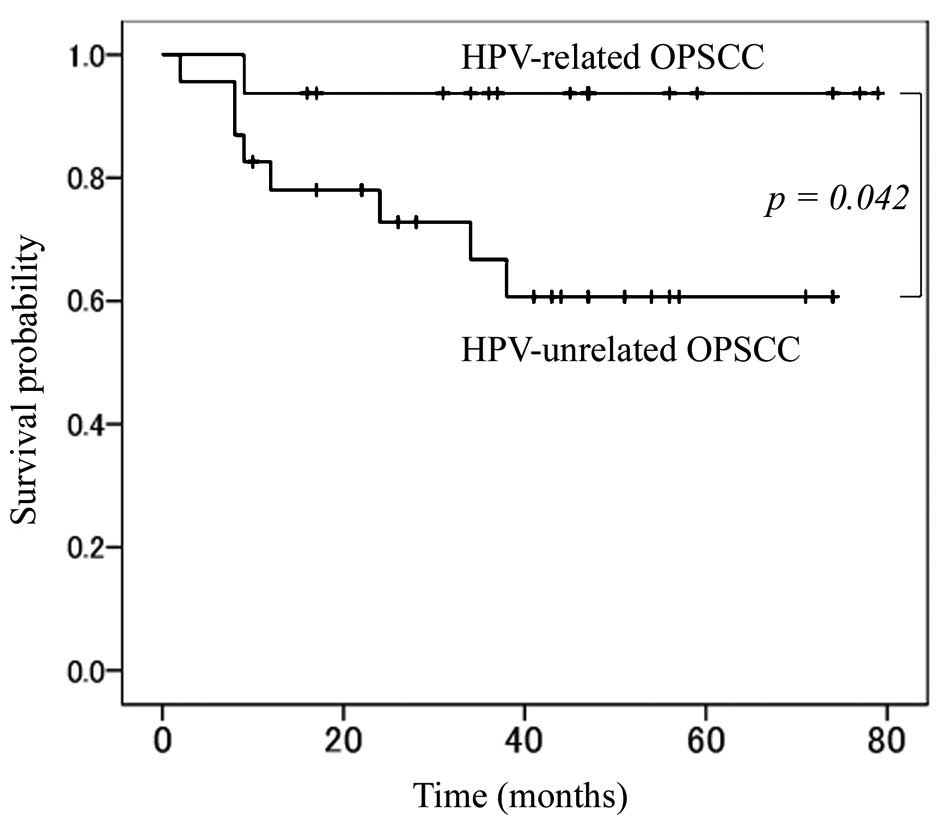|
1
|
Brizel DM, Albers ME, Fisher SR, et al:
Hyperfractionated irradiation with or without concurrent
chemotherapy for local advanced head and neck cancer. N Engl J Med.
338:1798–17804. 1998. View Article : Google Scholar : PubMed/NCBI
|
|
2
|
Argiris A: Update on chemoradiotherapy for
head and neck cancer. Curr Opin Oncol. 14:323–329. 2002. View Article : Google Scholar : PubMed/NCBI
|
|
3
|
Argiris A, Stenson KM, Brockstein BE, et
al: Neck dissection in the combined-modality therapy of patients
with locoregionally advanced head and neck cancer. Head Neck.
26:447–455. 2004. View Article : Google Scholar : PubMed/NCBI
|
|
4
|
Kohno N: The role of chemotherapy for
advanced oro and hypopharyngeal cancer. Auris Nasus Larynx.
31:113–118. 2004. View Article : Google Scholar : PubMed/NCBI
|
|
5
|
Brizel DM, Prosnitz RG, Hunter S, et al:
Necessity for adjuvant neck dissection in setting of concurrent
chemoradiation for advanced head-and-neck cancer. Int J Radiat
Oncol Biol Phys. 58:1418–1423. 2004. View Article : Google Scholar : PubMed/NCBI
|
|
6
|
Stenson KM, Huo D, Blair E, et al: Planned
post-chemoradiation neck dissection: significance of radiation
dose. Laryngoscope. 116:33–36. 2006. View Article : Google Scholar : PubMed/NCBI
|
|
7
|
McHam SA, Adelstein DJ, Rybicki LA, et al:
Who merits a neck dissection after definitive chemoradiotherapy for
N2-N3 squamous cell head and neck cancer? Head Neck. 25:791–798.
2003. View Article : Google Scholar : PubMed/NCBI
|
|
8
|
Goenka A, Morris LG, Rao SS, et al:
Long-term regional control in the observed neck following
definitive chemoradiation for node-positive oropharyngeal squamous
cell cancer. Int J Cancer. 133:1214–1222. 2013. View Article : Google Scholar
|
|
9
|
Hirakawa H, Hasegawa Y, Hanai N, Ozawa T,
Hyodo I and Suzuki M: Surgical site infection in clean-contaminated
head and neck cancer surgery: risk factors and prognosis. Eur Arch
Otorhinolaryngol. 270:1115–1123. 2013. View Article : Google Scholar : PubMed/NCBI
|
|
10
|
Mendenhall WM, Parsons JT, Cassisi NJ and
Million RR: Squamous cell carcinoma of the tonsillar area treated
with radical irradiation. Radiother Oncol. 10:23–30. 1987.
View Article : Google Scholar : PubMed/NCBI
|
|
11
|
Suzuki M, Kawakita D, Hani N, et al: The
contribution of neck dissection for residual neck disease after
chemoradiotherapy in advanced oropharyngeal and hypopharyngeal
squamous cell carcinoma patients. Int J Clin Oncol. 18:578–584.
2013. View Article : Google Scholar
|
|
12
|
Nouraei SAR, Upile T, Al-Yaghchi C, et al:
Role of planned postchemothrapy selective neck dissection in the
multimodality management of head and neck cancer. Laryngoscope.
118:797–803. 2008. View Article : Google Scholar : PubMed/NCBI
|
|
13
|
Narayan K, Crane CH, Kleid S, Hughes PG
and Peters LJ: Planned neck dissection as an adjunct to the
management of patients with advanced neck disease treated with
definitive radiotherapy: for some or for all? Head Neck.
21:606–613. 1999. View Article : Google Scholar : PubMed/NCBI
|
|
14
|
Grabenbauer GG, Rödel C, Ernst-Stecken A,
et al: Neck dissection following radiochemotherapy of advanced head
and neck cancer - for selected cases only? Radiother Oncol.
66:57–63. 2003. View Article : Google Scholar : PubMed/NCBI
|
|
15
|
Liauw SL, Mancuso AA, Amdur RJ, Morris CG,
Villaret DB, Werning JW and Mendenhall WM: Postradiotherapy neck
dissection for lymph node-positive head and neck cancer: the use of
computed tomography to manage the neck. J Clin Oncol. 24:1421–1427.
2006. View Article : Google Scholar : PubMed/NCBI
|
|
16
|
Hashibe M, Brennan P, Chuang SC, et al:
Interaction between tobacco and alcohol use and the risk of head
and neck cancer: pooled analysis in the international head and neck
cancer epidemiology consortium. Cancer Epidemiol Biomarkers Prev.
18:541–550. 2009. View Article : Google Scholar : PubMed/NCBI
|
|
17
|
Nasman A, Attner P, Hammarstedt L, et al:
Incidence of human papillomavirus (hpv) positive tonsillar
carcinoma in stockholm, sweden: an epidemic of viral-induced
carcinoma? Int J Cancer. 125:362–366. 2009. View Article : Google Scholar
|
|
18
|
Ang KK, Harris J, Wheeler R, et al: Human
papillomavirus and survival of patients with oropharyngeal cancer.
N Engl J Med. 363:24–35. 2010. View Article : Google Scholar : PubMed/NCBI
|
|
19
|
Deng Z, Hasegawa M, Matayoshi S, Kiyuna A,
Yamashita Y, Maeda H and Suzuki M: Prevalence and clinical features
of human papillomavirus in head and neck squamous cell carcinoma in
okinawa, southern japan. Eur Arch Otorhinolaryngol. 268:1625–1631.
2011. View Article : Google Scholar : PubMed/NCBI
|
|
20
|
Deng Z, Hasegawa M, Yamashita Y, et al:
Prognostic value of human papillomavirus and squamous cell
carcinoma antigen in head and neck squamous cell carcinoma. Cancer
Sci. 103:2127–2134. 2012. View Article : Google Scholar : PubMed/NCBI
|
|
21
|
Shonka DC Jr, Shoushtari AN, Thomas CY, et
al: Predicting residual neck disease in patients with oropharyngeal
squamous cell carcinoma treated with radiation therapy. Arch
Otolaryngol Head Neck Surg. 135:1126–1132. 2009. View Article : Google Scholar : PubMed/NCBI
|
|
22
|
Huang SH, Patel S, O’Sullivan B, et al:
Longer survival in HPV related head and neck cancer patients
following positive post radiation planned neck dissection. Head
Neck. Mar 14–2014.(Epub ahead of print). View Article : Google Scholar
|
|
23
|
Eisenhauer EA, Therasse P, Bogaerts J, et
al: New response evaluation criteria in solid tumours: revised
RECIST guideline (version 1.1). Eur J Cancer. 45:228–247. 2009.
View Article : Google Scholar
|
|
24
|
de Roda Husman AM, Walboomers JM, van den
Brule AJ, Meijer CJ and Snijders PJ: The use of general primers gp5
and gp6 elongated at their 3′ ends with adjacent highly conserved
sequences improves human papillomavirus detection by PCR. J Gen
Virol. 76:1057–1062. 1995.
|
|
25
|
Manos MM, Ting Y, Wright DK, Lewis AJ,
Broker TR and Wolinsky SM: Use of polymerase chain reaction
amplification for the detection of genital human papillomaviruses.
Cancer Cells. 7:209–214. 1989.
|
|
26
|
Remmerbach TW, Brinckmann UG, Hemprich A,
Chekol M, Kuhndel K and Liebert UG: PCR detection of human
papillomavirus of the mucosa: comparison between my09/11 and
GP5+/6+primer sets. J Clin Virol. 30:302–308.
2004. View Article : Google Scholar : PubMed/NCBI
|
|
27
|
Klaes R, Friedrich T, Spitkovsky D, et al:
Overexpression of p16(ink4a) as a specific marker for dysplastic
and neoplastic epithelial cells of the cervix uteri. Int J Cancer.
92:276–284. 2001. View
Article : Google Scholar
|
|
28
|
Singhi AD and Westra WH: Comparison of
human papillomavirus in situ hybridization and p16
immunohistochemistry in the detection of human
papillomavirus-associated head and neck cancer based on a
prospective clinical experience. Cancer. 116:2166–2173. 2010.
|
|
29
|
Hillel AT, Fakhry C, Pai S, et al:
Selective versus comprehensive neck dissection after chemoradiation
for advanced oropharyngeal squamous cell carcinoma. Otolaryngol
Head Neck Surg. 141:737–742. 2009. View Article : Google Scholar
|
|
30
|
Hinerman RW, Medenhall WM, Amdur RJ,
Stringer SP, Villaret DB and Robbins T: Carcinoma of the
supraglottic larynx: treatment results with radiotherapy alone or
with planned neck dissection. Head Neck. 24:456–467. 2002.
View Article : Google Scholar
|
|
31
|
Davidson BJ, Newkirk KA, Harter W, Picken
CA, Cullen KJ and Sessions RB: Complications from planned,
posttreatment neck dissections. Neck Surg. 125:401–405.
1999.PubMed/NCBI
|
|
32
|
Wang SS, Trunk M, Schiffman M, et al:
Validation of p16INK4aas a marker of oncogenic human
papillomavirus infection in cervical biopsies from a
population-based cohort in Costa Rica. Cancer Epidemiol Biomarkers
Prev. 13:1355–1360. 2004.PubMed/NCBI
|
|
33
|
Smith EM, Wang D, Kim Y, et al:
P16INK4aexpression, human papillomavirus, and survival
in head and neck cancer. Oral Oncol. 44:133–142. 2008.
|
|
34
|
Thomas J and Primeaux T: Is p16
immunohistochemistry a more cost-effective method for
identification of human papilloma virus-associated head and neck
squamous cell carcinoma? Ann Diagn Pathol. 16:91–99. 2012.
View Article : Google Scholar : PubMed/NCBI
|
|
35
|
Hoffmann M, Tribius S, Quabius ES, et al:
HPV DNA, E6*I-mRNA expression and
p16INK4Aimmunohistochemistry in head and neck cancer -
how valid is p16INK4Aas surrogate marker? Cancer Lett.
323:88–96. 2012.
|



